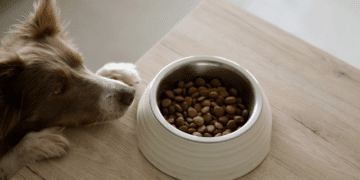Maintaining your pet’s oral hygiene is essential for their overall health. Poor pet dental care can lead to plaque buildup, gum disease, bad breath, and even serious health complications. Brushing your pet’s teeth regularly is the best way to prevent dental problems and keep their mouth clean and healthy.
Why Brushing Your Pet’s Teeth is Important
Brushing your pet’s teeth is a crucial part of their overall health routine. Without proper care, pets can develop tartar buildup, inflamed gums, and infections that may affect their organs. Regular brushing helps:
- Prevent plaque and tartar accumulation
- Reduce the risk of gum disease and tooth loss
- Eliminate bad breath
- Improve your pet’s overall well-being
Choosing the Right Tools for Brushing
Selecting the right tools is important for effective pet oral hygiene. Here’s what you’ll need:
- Pet-safe toothbrush: Use a brush specifically designed for dogs or cats. Finger brushes are a great option for beginners.
- Pet toothpaste: Never use human toothpaste, as it contains ingredients harmful to pets. Choose an enzymatic toothpaste in a flavor your pet enjoys.
- Dental wipes or treats: If brushing is too challenging, dental wipes and treats can help reduce plaque.
Guide to Brushing Your Pet’s Teeth
Step 1: Get Your Pet Comfortable
Before you start brushing, allow your pet to get used to having their mouth touched. Gently lift their lips and touch their teeth and gums for a few days before introducing a toothbrush.
Step 2: Introduce Pet Toothpaste
Let your pet taste the toothpaste first to create a positive association. Choose a flavor like chicken or peanut butter for dogs, or fish for cats.
Step 3: Use a Toothbrush or Finger Brush
Apply a small amount of toothpaste to the brush and gently clean the outer surfaces of the teeth using circular motions. Focus on the gumline, where plaque tends to build up.
Step 4: Be Gentle and Take Breaks
If your pet resists, take breaks and try again later. Gradually increase the brushing time as they get used to the process.
Step 5: Reward Your Pet
After brushing, reward your pet with a treat or praise to make the experience enjoyable and reinforce good behavior.
Tips for Making Brushing Easier
- Start brushing as early as possible to make it a routine.
- Use positive reinforcement like treats and praise.
- Brush your pet’s teeth at least 2-3 times a week, but daily brushing is ideal.
- If brushing is too difficult, try dental wipes or water additives as an alternative.
Common Mistakes to Avoid
- Using human toothpaste: Ingredients like xylitol can be toxic to pets.
- Brushing too aggressively: Be gentle to avoid hurting your pet’s gums.
- Skipping regular vet check-ups: A professional dental cleaning may still be necessary for optimal oral health.
Conclusion
Brushing your pet’s teeth is an essential part of keeping them healthy and happy. Establishing a regular pet dental care routine helps prevent dental issues and improves their overall well-being. Start brushing today and consult your vet for additional dental care recommendations. Prioritizing your pet’s oral hygiene will lead to a longer and healthier life.









